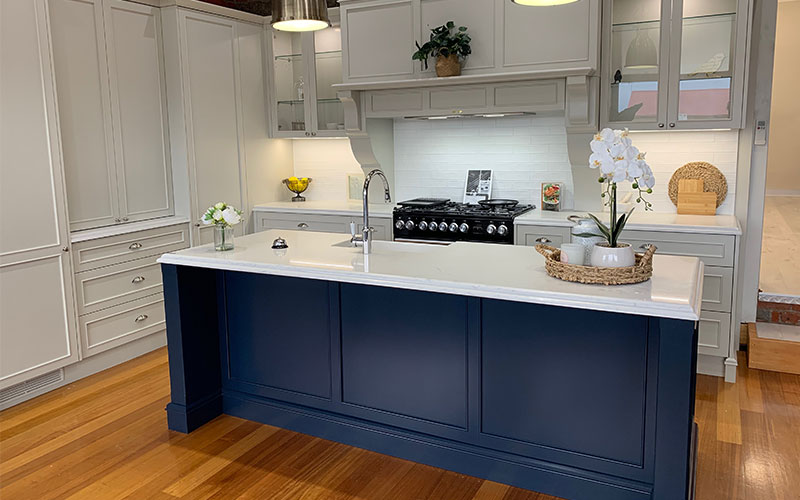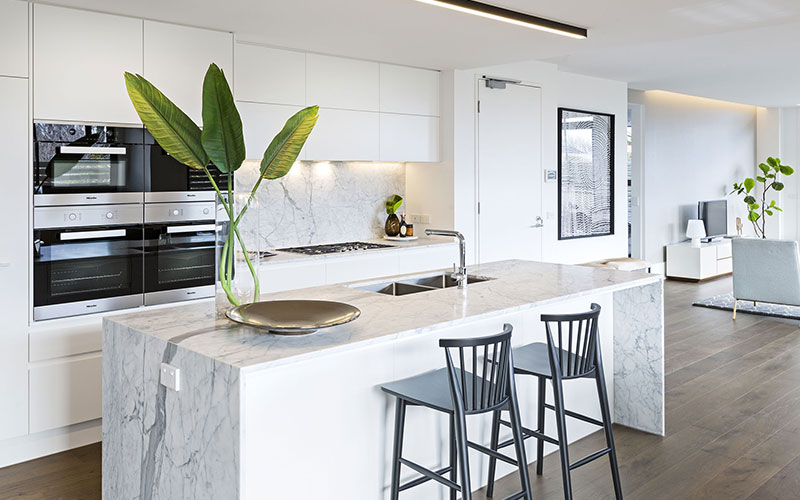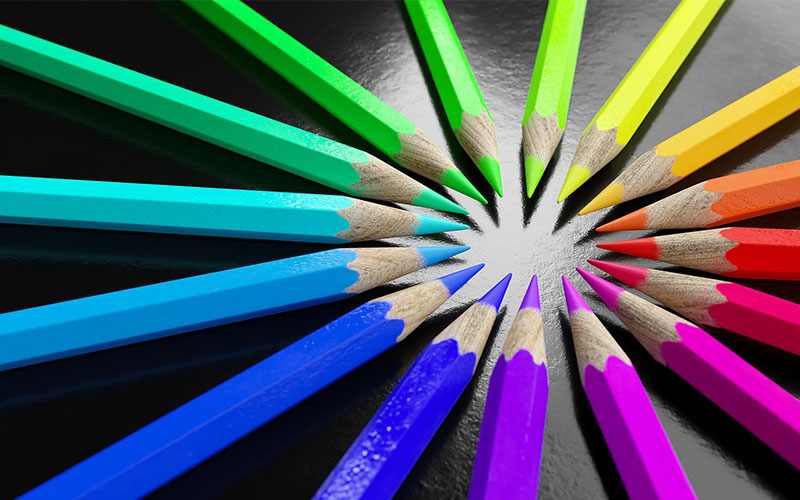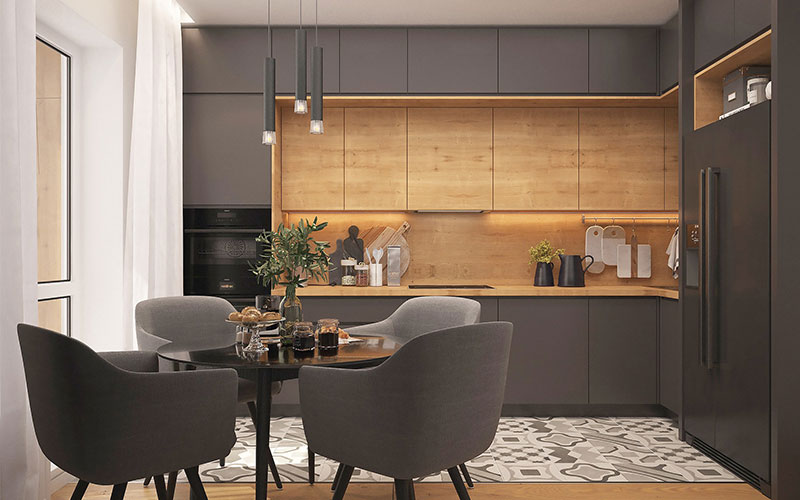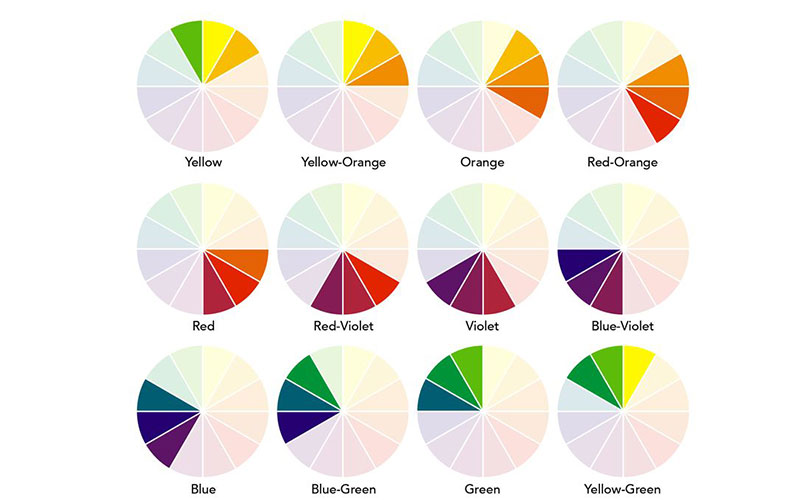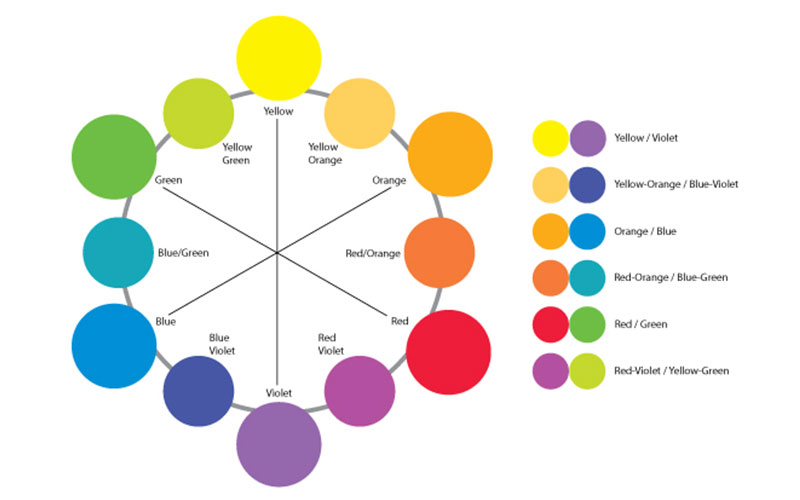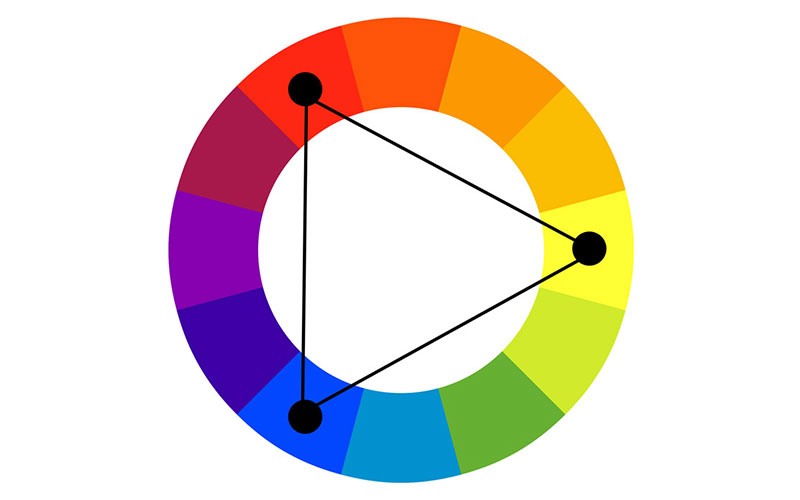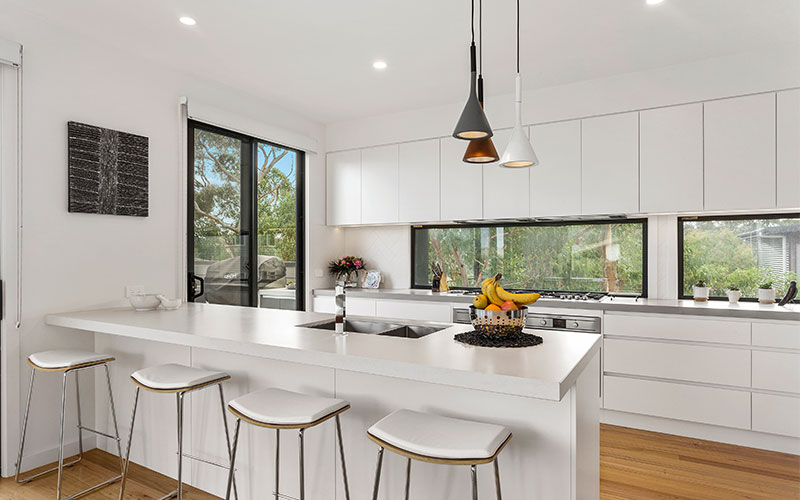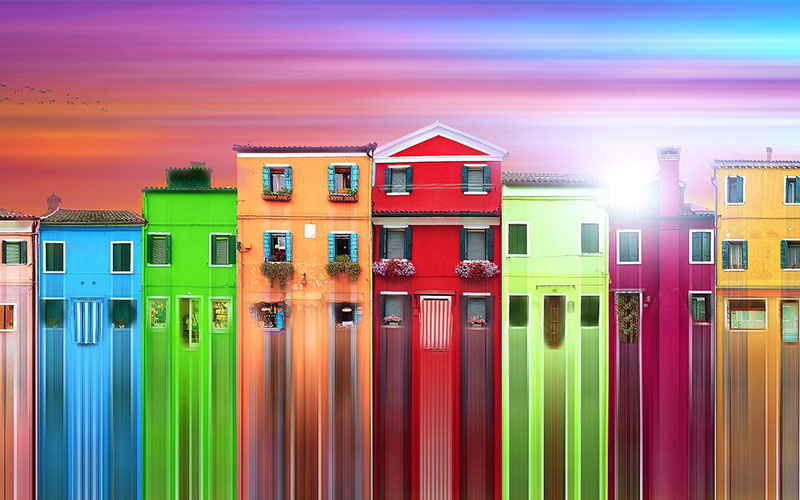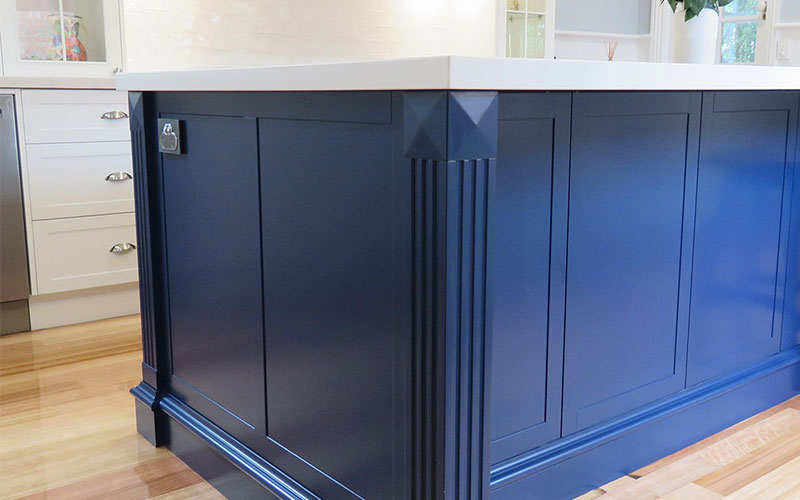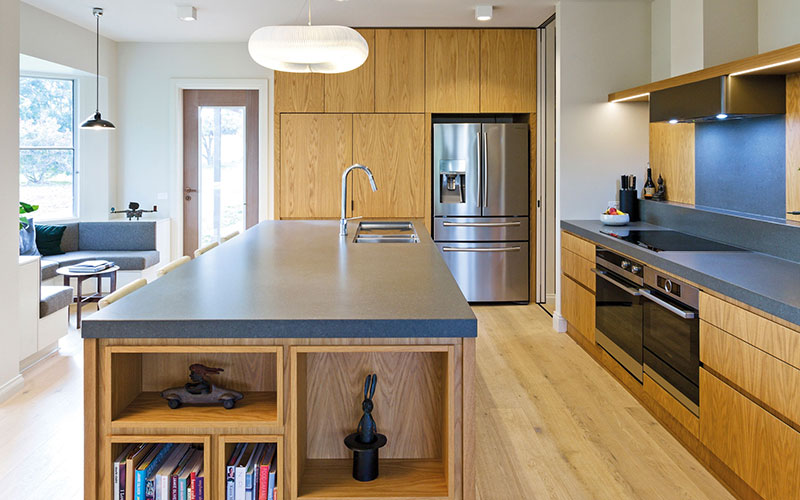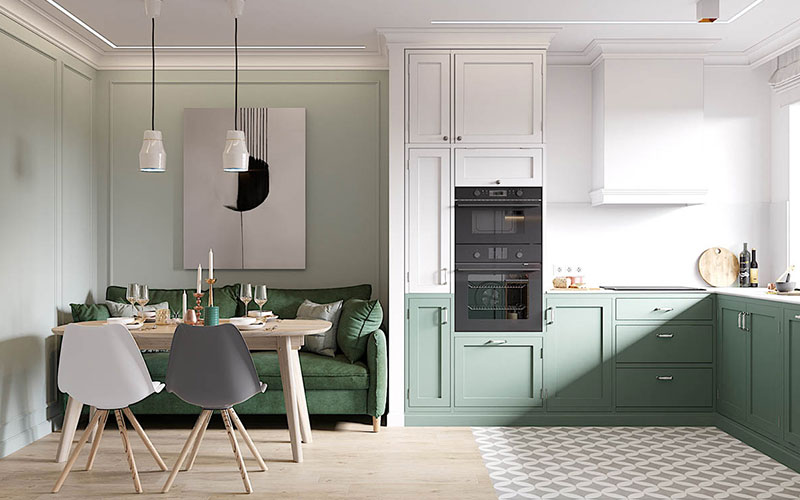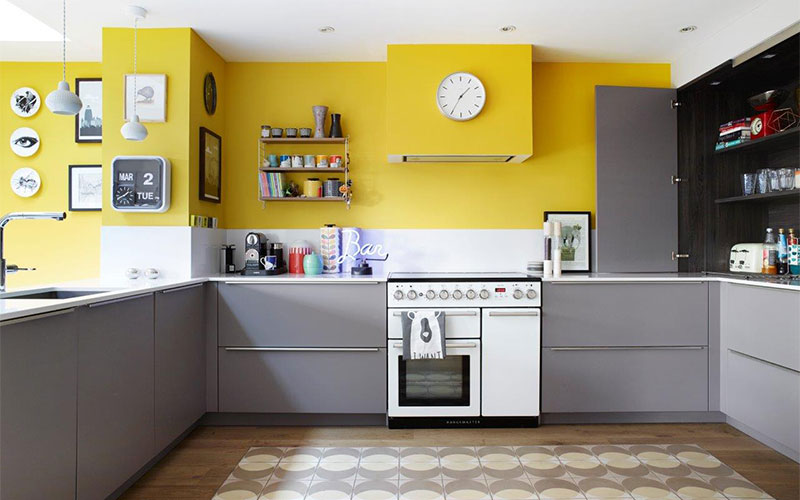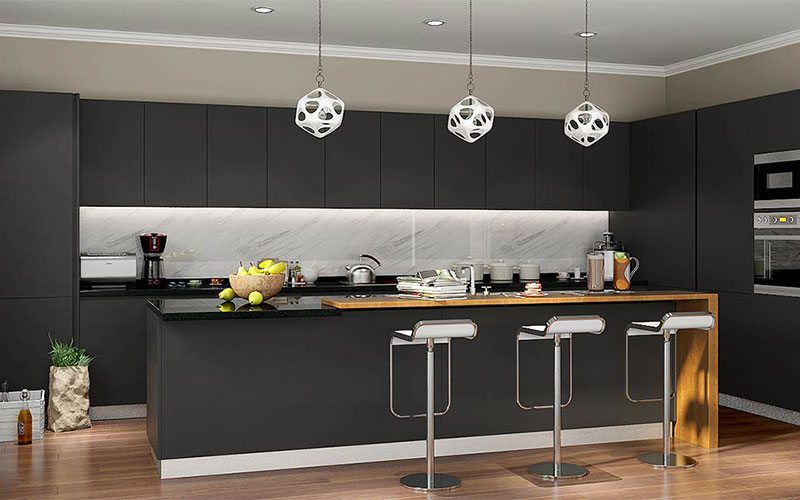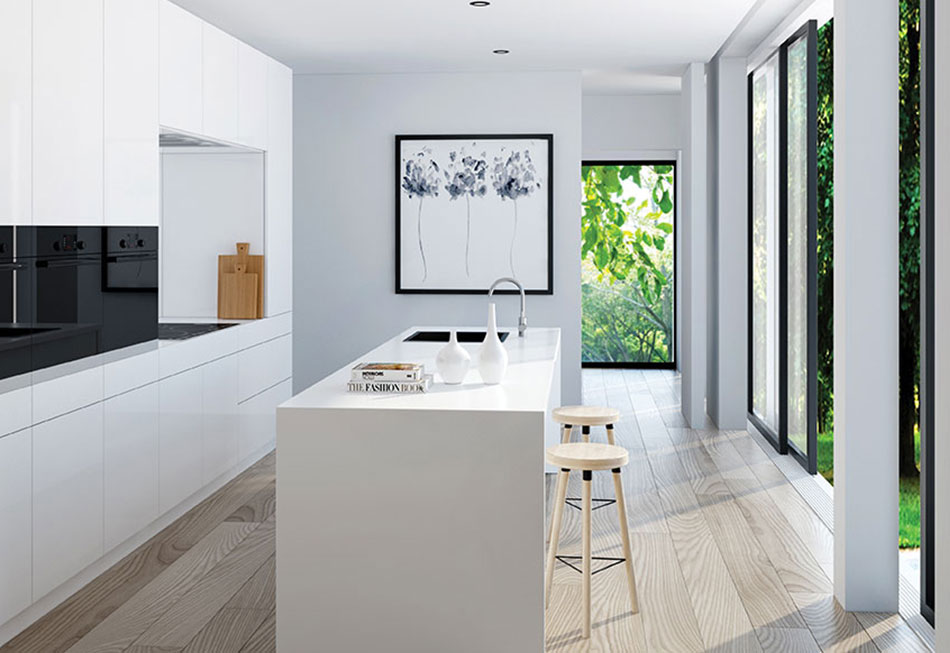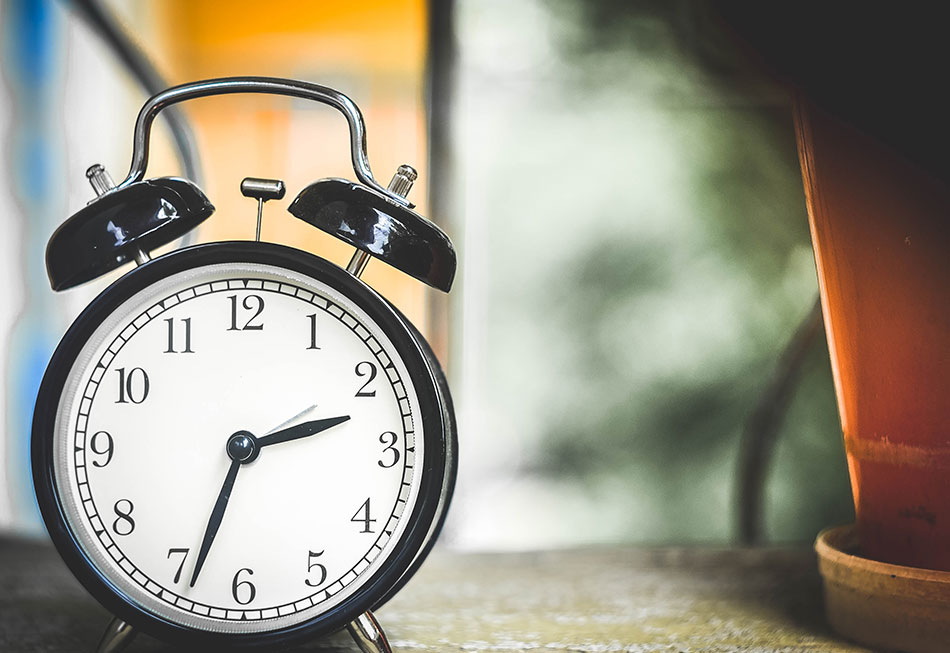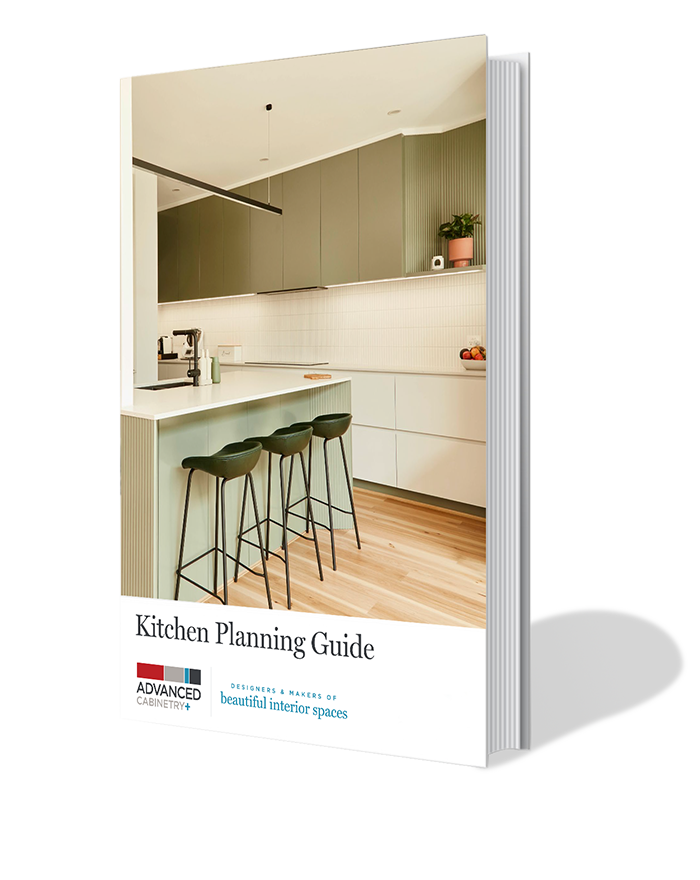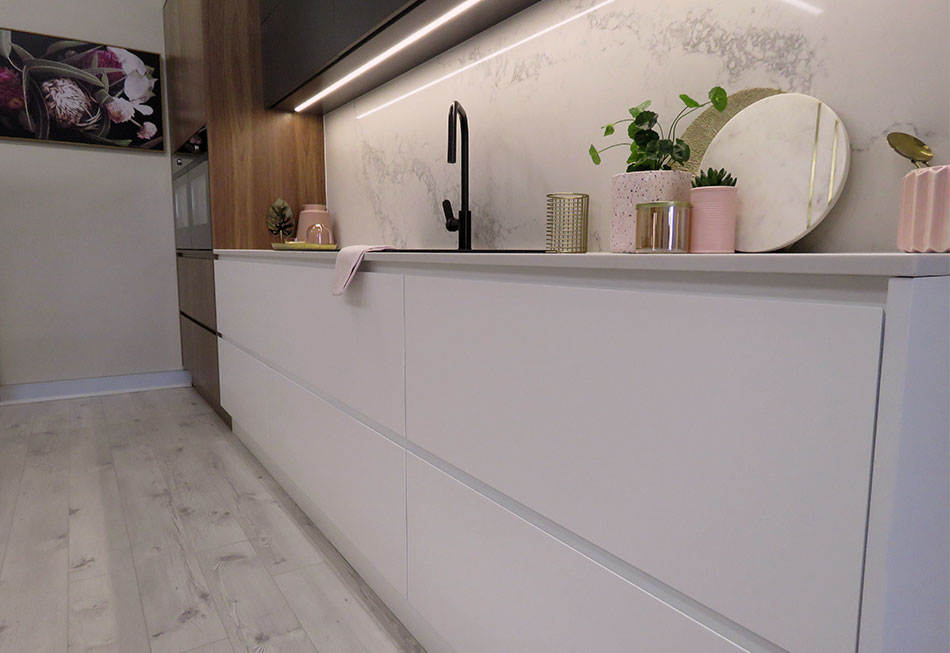
Kitchen Cabinet Colours : How Do I Pick the Right Colour for My Kitchen?
It’s a well-known fact that colours have the power to affect the way you feel. When you walk into a room the dominating colours are pretty much what creates the first impression.
In most kitchens, cabinets take a large part of the visual space. That’s why it’s important to know how to choose a kitchen cabinet colour that would turn the kitchen into a place that inspires you.
Why are the kitchen cabinet colours so important?
When thinking about the design of your kitchen, most people think about functionality. Will there be enough counter and storage space? Will there be enough natural light coming in? If the dining area is situated in the same room will it be comfortable enough?
Focusing on the kitchen cabinet colours may not be very high on your priority list but if you make the wrong choice you’ll realise it very soon. Because of the large space they cover, kitchen cabinets usually define the perception of the whole kitchen. So, how to choose kitchen cabinet colours?
Several important factors need to be taken into consideration when you are ready to start talking colours. The first and most important one is the style of the kitchen. The space should be consistent with the rest of the house so this is where you need to start.
On the other hand, by choosing the right colours you have the opportunity to define the general mood in the room and affect the way you and your family feel inside.
There is no single answer to what the best kitchen cabinet colours are. But continuing on, you’ll get some tips on picking the right colours for your kitchen cabinets.
How to choose the right kitchen cabinet colours?
The right kitchen cabinet colours can vary significantly depending on your personal preferences and the style you have chosen to dominate throughout the home.
There are, however, tips and tricks that could guide your way through the unlimited options available on the market. We are here to show you how to choose kitchen cabinet colour that is right for you.
Kitchen style
In many cases, the style of your kitchen is defined by the style of your entire home.
Traditional kitchens go best with subtle colours like white and cream, as they add to the classy look. Bright whites and soft creams are also a great option for a dominating or secondary colour if you want to go for a minimalist Shaker-style kitchen.
Planning a modern kitchen, on the other hand, allows you to fully release your imagination when it comes to colours. Bright, bold, and contrasting colours can be incorporated into almost any modern design.
Keep in mind, however, that any bright colour will be dominating and will easily attract the eye. Try to find a balance between bright and more subtle colours. You also need to remember that often bright bold colours are generally a “trend” & may date a kitchen quickly & you may tire of it more rapidly.
Existing colours
Sometimes the colour palette in the room has already been established and needs to be taken into account; if you’re building your kitchen from scratch that’s rarely the case. But if you are renovating your old kitchen, you will need to take the surroundings into consideration.
While changing the details such as curtains, accessories, chairs, or rugs is a rather easy task, there are some elements that you might just need to accept. These include floor, walls, window frames, even appliances if you have previously optioned for non-standard designs.
If the surrounding colours are neutral like white or grey, then you’re pretty much safe whatever you choose. If there are already colour accents, however, you will have to work with them to create a well-balanced look.
One of the ways to choose complementary colours is by referencing a colour wheel. It’s an easy tool used by both professionals and enthusiasts. The wheel will help you go through the tricky task of combining colours.
In essence, first you need to find the colour you need to match. After that you have several options to choose from:
- Analogous colours. The second colour is positioned next to the first one. This way you’ll be able to stick to the current atmosphere without exactly matching the colour.
- Complementary colours. The second colour is positioned on the opposite side of the wheel. This option is suitable if you wish to add another colour accent to the kitchen.
- Triad colours. By starting from the existing colour you need to draw an imaginary triangle on the wheel. The three colours that form the triad will be your main and secondary tones.
Should you choose to have two or more colour accents, you better combine them with a neutral base to create balance. A good practice is to try to limit the colours in the room to no more than three of four. Otherwise, the room would look cluttered and busy.
Size and lighting
In the best case scenario, you will have a spacious kitchen full of natural light. In most cases, however, the situation is a little different.
A small or poorly lit kitchen could be either enhanced or subdued solely by the colour of the kitchen cabinets. In general, smaller spaces benefit from lighter colours. This is because light colours visually enlarge the room. The same goes for spaces that are not well lit—a lighter tone will make the room look brighter.
In case you have a large and well-lit kitchen, however, you can safely go with dark and bold colours for your cabinets. While the dark colours will make the room look smaller, this won’t cause discomfort if the room provides enough space and natural light. Instead, it will create a more warm and intimate atmosphere.
It is worth mentioning here that the eye is naturally drawn to the light. In a kitchen, the artificial light is usually directed toward the working area, i.e. the benchtops. If you want to have a well-lit benchtop and yet you still want to draw attention to the cabinets, try picking contrasting colours for the base and wall cabinets.
Alternatively, choosing complementary colours for the benchtop and cabinets will create an environment that does not force the eye in either direction.
Mood effect
Colours are known to affect the way we feel. Whether you realise it or not, they have a huge impact on people’s mood and thoughts. When you are choosing the colours for your kitchen, or any other room for that matter, you could use them to your advantage.
- Red fills the room with energy. It creates excitement and stimulates appetite and conversation. Under artificial light, the colour usually looks muted and elegant. Keep in mind, however, that red also raises the blood pressure and heart rate.
Red is the colour that most attracts attention. Surveys show it is the colour most frequently associated with visibility, proximity and extroverts, it is also the colour most associated with dynamism and activity. – Wikipedia.
- Blue acts as an opposite to the red colour. It is said to lower the blood pressure and heart rate. Because of its relaxing nature, it is commonly used in bedrooms and bathrooms, but it is also a great choice for your kitchen cabinets if you’re looking to achieve a calming effect. In its darker shades blue is associated with sadness, so if you prefer the darker tones, better use them as accents instead of the main colour. As for lighter and pastel tones, they may leave a feeling of coldness, so try to avoid their domination in rooms that are generally cooler.
- Green is another colour that fosters relaxation. It is the most relaxing colour for the eyes and relieves the stress from the day. If you want to associate your kitchen with nature and relaxation, green is a great choice for either dominating or accent colour.
- Purple in its darker shades is dramatic and sophisticated. It stimulates creativity which makes it a great option if you like to get creative in the kitchen. On the other hand, lighter hues of purple have the same properties as the blue colour but without the chilly effect.
- Yellow is energising and joyful. It’s associated with the sunshine and is known to stimulate happiness. Yellow is a common choice for kitchens and dining rooms, especially when the space is Still, yellow should also be used with caution and works better as a secondary colour. In large doses, the colour could encourage frustration and anger.
- Orange also stimulates excitement and increases energy levels. While it’s not a suitable option for a bedroom or living room, in the kitchen it could fill you with inspiration and enthusiasm.
- Neutrals, such as black, white, grey, and brown, are the most common base for any design projects. While all-neutral designs go in and out of style quite often, they are perfect to balance the colours you have selected to use.
What are the 2022 colour trends?
Once you’re acquainted with the basics, it turns out that choosing kitchen cabinet colours is not as hard as it seems. But, theory is one thing and making a practical decision is something completely different.
Since single-colour cabinets are now a thing of the past and multicoloured varieties are still considered overwhelming by many, it’s understandable how all the hype is focused on two-tone cabinets.
The beauty of two-tone kitchen cabinets is that they can practically go with every kitchen style. It’s all about choosing a dominating colour.
A common rule of thumb when working with two colours is to use the darker hue for the lower cabinets and the lighter hue for the upper ones. This will create balance, help visually increase the space, and make the room look brighter. The tip applies for both combinations between a colour and a neutral, and when you have selected two tones of the same colour.
If you don’t want to overload the space, the second colour can also be used as an accent on a specific part of the cabinetry.
To put what we covered so far in actual examples, here are some current colour trends when it comes to kitchen cabinets.
Black and white
Although a bold choice, black is coming back into trend. Combined with bright whites or warm wood (or even both) it creates a classy environment you would love to spend time in.
To make the most of the combo, go for matte black and be sure to maintain the balance by placing the black in the lower area and the white in the upper.
Peacock blue and white
Another combination that is both brave and soothing is peacock blue combined with bright white. You could use the colour for the lower cabinets or as an accent. Either way, the result will be beautiful.
Mixed wood
The combo involves mixing natural wood for the lower cabinets and painting the upper cabinets in a complementary colour. The trendy materials include the warm and rich walnut and the soft oak and ash.
The option is suitable for everyone who loves the look and feel of natural wood but wants to add some contemporary style.
Sea green
If you strive for tranquillity, light sea green can create a uniquely serene atmosphere. The colour is not demanding so it can be well combined with white, beige, and even black. The lighter combos will brighten up the room while a dark accent will add to a classy-looking kitchen.
Grey
Grey is a popular option among those looking for a minimalistic design as well as those who used to love the all-white simplicity of kitchen cabinets but still want to follow the trends.
Grey is a uniquely versatile colour and can be matched with literally anything. Completed with another neutral colour it creates a sophisticated and non-demanding feel.
Daring colours
Bold and daring colours are a hit at the moment. But instead of the full-coloured cabinets that we are used to seeing, bright colours are now used as an accent. Some elements that may carry the colour are the kitchen island or the base cabinets.
While there are no limitations in terms of which colour you’ll use, the most popular options include navy blue, dark red, bright yellow, and forest green.
Matte finishes
Contrary to the shiny designs of past years, in 2022 it’s all about matte finishes. Matte cabinets and even matte appliances are available in multiple colour varieties to satisfy both those who favour bold designs and those looking for something subtle.
The muted appearance adds an element of sophistication to the whole kitchen.
Keep in mind, however, that matte finishes tend to absorb the light, meaning if you’re planning a small or not well-lit kitchen you may opt for another design.
Nervous about picking the right kitchen cabinet colours?
If you’re still not sure which kitchen cabinet colours are most suitable for your home, it is always a great idea to hire a specialist. Working with a designer is the best way to ensure you’ll get the most of the vibe you are willing to achieve.
Advanced Cabinetry Design consultant’s can assist with colour swatches and door samples. This way you’ll be able to pick the perfect cabinet colour that matches the colour of your wall, skirting, and floor.
Aside from guiding your choice, working with a designer has other benefits, including:
- They’ll make sure you get the most in terms of functionality, style, and aesthetics. Building a great kitchen space won’t cost a fortune if you have an expert on your side that will help you avoid costly mistakes. It’s all about finding the right combination of style and materials picked according to the floor plan.
- Optimise the price-to-value ratio. A designer will be able to provide you with multiple design and material options. This is especially important if you’re planning to create or renovate your kitchen on a budget. As they are familiar with the ups and downs of each product, designers can help you achieve the kitchen you dreamed about and still tailor it as much as possible to your budget.
If you’re ready to give your kitchen a brand-new look and feel but don’t want to deal with all the hustle, hiring a designer could be just what you need. Get in touch with us and ask about our favourite colour combination for kitchen cabinets.

